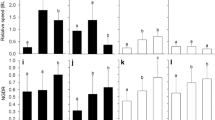Abstract
Body morphology is said to be the all important factor in determining swimming prowess in copepods. Fusion and differentiation of the body (tagmosis) is coupled with advance into the pelagic realm of the Gymnoplea and is thought, by the provision of a rigid thoracic tagma, to promote swimming efficiency. Thus pelagic copepods are believed to be secondarily derived from bottom dwelling predecessors. Experimental evidence is presented to show that the majority of bottom dwelling harpacticoid families, including the most primitive and the most advanced, have representatives that undergo active sustained swimming movements. Such a widespread occurrence is indicative of a conservative evolutionary trait. This primitive behaviour is linked to precopulatory association which takes place necessarily in the water column; it is a feature retained by representatives of all copepod orders. The implication of cephalic appendage vibration (feeding currents) is the essential feature in the swimming success of the Gymnoplea; planktonic efficiency in these is suggested to have evolved coincident with, rather than because of increased tagmosis.
Access this chapter
Tax calculation will be finalised at checkout
Purchases are for personal use only
Preview
Unable to display preview. Download preview PDF.
Similar content being viewed by others
References
Bell, S. S., G. R. F. Hicks, K. Walters, in press. Active swimming in meiobenthic copepods of seagrass beds: geographic comparisons of abundances and reproductive characteristics. Mar. Biol.
Boxshall. G. A., 1979. The planktonic copepods of the northeastern Atlantic Ocean: Harpacticoida. Siphono- stomatoida and Mormonilloida. Bull. Br. Mus. nat. Hist. ( Zool. ) 35: 201–264.
Boxshall, G. A., 1983. A comparative functional analysis of the major maxillopodan groups. In F. R. Schram (ed.). Crustacean Phylogeny. Balkema, Rotterdam: 121–143.
Boxshall. G. A., 1985. The comparative anatomy of two copepods. a predatory calanoid and a particle-feeding mormonilloid. Phil. Trans. r. Soc. Lond. B331: 303–337.
Boxshall, G.A., F.D. Ferrari, H. Tiemann, 1984, The ancestral copepod: towards a consensus of opinion at the First International Conference on Copepoda. Crustaceana Suppl. 7: 68–84.
Fosshagen, A., T. M. Iliffe, 1985. Two new genera of Calanoida and a new order of Copepoda, Platycopioida, from marine caves on Bermuda. Sarsia 70: 345–358.
Gauld, D. T., 1966. The swimming and feeding of planktonic copepods. In H. Barnes (ed.). Some Contemporary Studies in Marine Science. Allan,amp; Unwin, London: 313–334.
Hicks, G. R. F., 1977. Species composition and zoogeography of marine phytal harpacticoid copepods from Cook Strait, and their contribution to total phytal meiofauna. N.Z. J1. mar. Freshwat. Res. 11: 411–469.
Hicks, G. R. F., 1980. Structure of phytal harpacticoid copepod assemblages and the influence of habitat complexity and turbidity. J. exp. mar. Biol. Ecol. 44: 157–192.
Hicks. G. R. F., 1985. Meiofauna associated with rocky shore algae. In P. G. Moore, R. Seed (eds), The Ecology of Rocky Coasts. Hadder, Stoughton, London 36–56.
Hicks, G.R. F., 1986. Distribution and behaviour of meiofaunal copepods inside and outside seagrass beds. Mar. Ecol. Prog. Ser. 31: 159–170.
Hicks. G. R. F., B. C. Coull. 1983. The ecology of marine meiobenthic harpacticoid copepods. Oceanogr mar. Biol, annu. Rev. 21: 67–175.
Kabata, Z., 1979. Parasitic Copepoda of British Fishes. Ray Society, London, 468 pp.
Koehl, M. A., J. R. Strickler, 1981. Copepod feeding currents: Food capture at low Reynolds number. Limnol. Oceanogr. 26: 1062–1073.
Lang, K., 1948. Monographic der Harpacticiden. Hakan Ohlsson, Lund. 1682 pp.
Manton, S. M., 1977. The Arthropoda. Habits, Functional Morphology and Evolution Clarendon, Oxford. 527 pp.
Marcotte. B. M., 1982. Evolution within the Crustacea. Part 2: Copepoda. In L G. Abele (ed.). The Biology of Crustacea Vol. 1 Systematics, the Fossil Record and Biogeography. Academic Press, New York: 185–197.
Marcotte. B. M., 1984. Behaviourally defined ecological: resources and speciation in Tisbe ( Copepoda: Har- pacticoida). J. crust. Biol. 4: 404–416.
Marcotte. B. M., 1986. Phylogeny of the Copepoda Harpacticoida. Syllogeus 58: 186–190.
Noodt. W., 1971. Ecology of the Copepoda. Smithson. Contr. Zool 76: 97–102.
Park. T., 1986. Phylogeny of calanoid Copepoda Syllogeus 58: 191–196.
Por, F. D., 1969. The Canuellidae ( Copepoda, Harpacticoida) in the waters around the Sinai Peninsula and the problem of ‘Lessepsian’ migration of this family. Israel J. Zool. 18: 169–178.
Walters. K., S. S. Bell. 1986. Diel patterns of active vertical migration in seagrass meiofauna. Mar. Ecol. Prog. Ser. 34– 95–103.
Wells, J. B. J., 1970. Copepoda-1 Suborder Harpacticoida. Cons. int. L’Explor. Mer Zooplankton Sheet 133: 2–7.
Author information
Authors and Affiliations
Editor information
Rights and permissions
Copyright information
© 1988 Kluwer Academic Publishers
About this paper
Cite this paper
Hicks, G.R.F. (1988). Evolutionary implications of swimming behaviour in meiobenthic copepods. In: Boxshall, G.A., Schminke, H.K. (eds) Biology of Copepods. Developments in Hydrobiology, vol 47. Springer, Dordrecht. https://doi.org/10.1007/978-94-009-3103-9_56
Download citation
DOI: https://doi.org/10.1007/978-94-009-3103-9_56
Publisher Name: Springer, Dordrecht
Print ISBN: 978-94-010-7895-5
Online ISBN: 978-94-009-3103-9
eBook Packages: Springer Book Archive



